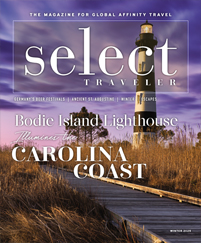Aurora
Largely rural, Dearborn County, Indiana, borders the Ohio River, and its historic river town of Aurora plays host to progressive dinners, teas and tours in the town’s lavish mansions. Settled in the early 1800s and incorporated in 1845, Aurora became a successful river port. With the railroad built to the west, its economic boom continued into the 19th century.
“Groups can opt for a tour that starts in the afternoon or evening and includes appetizers, entree and dessert,” said spokesman Bill Beinkemper. “Each course is at a different stop, and the places are as close as 10 minutes apart or less.”
Stops include the Hillforest Victorian House Museum overlooking the Ohio River. It was home to industrialist and financier Thomas Gaff and his family between 1855 and 1891. Shipping and riverboats were significant elements of the Gaff business and are reflected in the home’s architecture. Designated a National Historic Landmark in 1992, the elaborate Italian Renaissance mansion is surrounded by lovely gardens.
Another popular spot, the Veraestau Historic Site also overlooks the Ohio River. The Greek Revival mansion encapsulates Indiana’s architectural history and showcases the historic preservation practiced by two generations. The original 1810 house has seen much change over the years and eventually became a country retreat for industrialist Cornelius O’Brien in 1933.
“Custom tours that include additional sites can be easily planned, and the event can also include a step-on talk,” said Beinkemper.
Springfield, illinois
Abraham Lincoln called Springfield home for 30 years, and numerous sites and attractions provide a picture of his life and legacy. In summer, visitors can experience Lincoln’s life and times through the History Comes Alive program, which features costumed performers, musicians and re-enactors at historic sites and museums throughout the city. And groups might run into Old Abe himself strolling along a downtown street.
“Springfield is really the epicenter of Lincoln and his life, and you can’t fully understand him and his contribution to America without coming to his hometown,” said Chris Wills, communications director for the Illinois Historic Preservation Agency. “What you see here is the village where Lincoln lived when he first came to Illinois, the old state capitol where he served in the legislature, the only house he ever owned, his law office and his tomb.”
This year, the impressive Abraham Lincoln Presidential Library and Museum celebrates its 10th anniversary. It’s the nation’s only museum that tells Lincoln’s story from beginning to end. The special exhibit “Undying Words” runs through February 2016. It focuses on Lincoln’s five key speeches that reveal his evolving views on slavery. Among the artifacts on display are family mementos and artwork, the bloody gloves that Lincoln wore on the night he was shot and the walnut spool bed in which Lincoln died.
The museum’s Holavision Theater is one of a handful of holographic theaters in the nation. It entertains audiences with the show “Ghosts of the Library.” The Illinois Gallery changes its collection several times annually and rotates some of the museum’s most prized pieces.
Five blocks south of the museum, the Lincoln Home National Historic Site encompasses a four-block area. Here, Lincoln’s home has been restored to its appearance when he was elected the 16th president of the United States. Several other homes contain archaeological and historic information about the area and family life.









